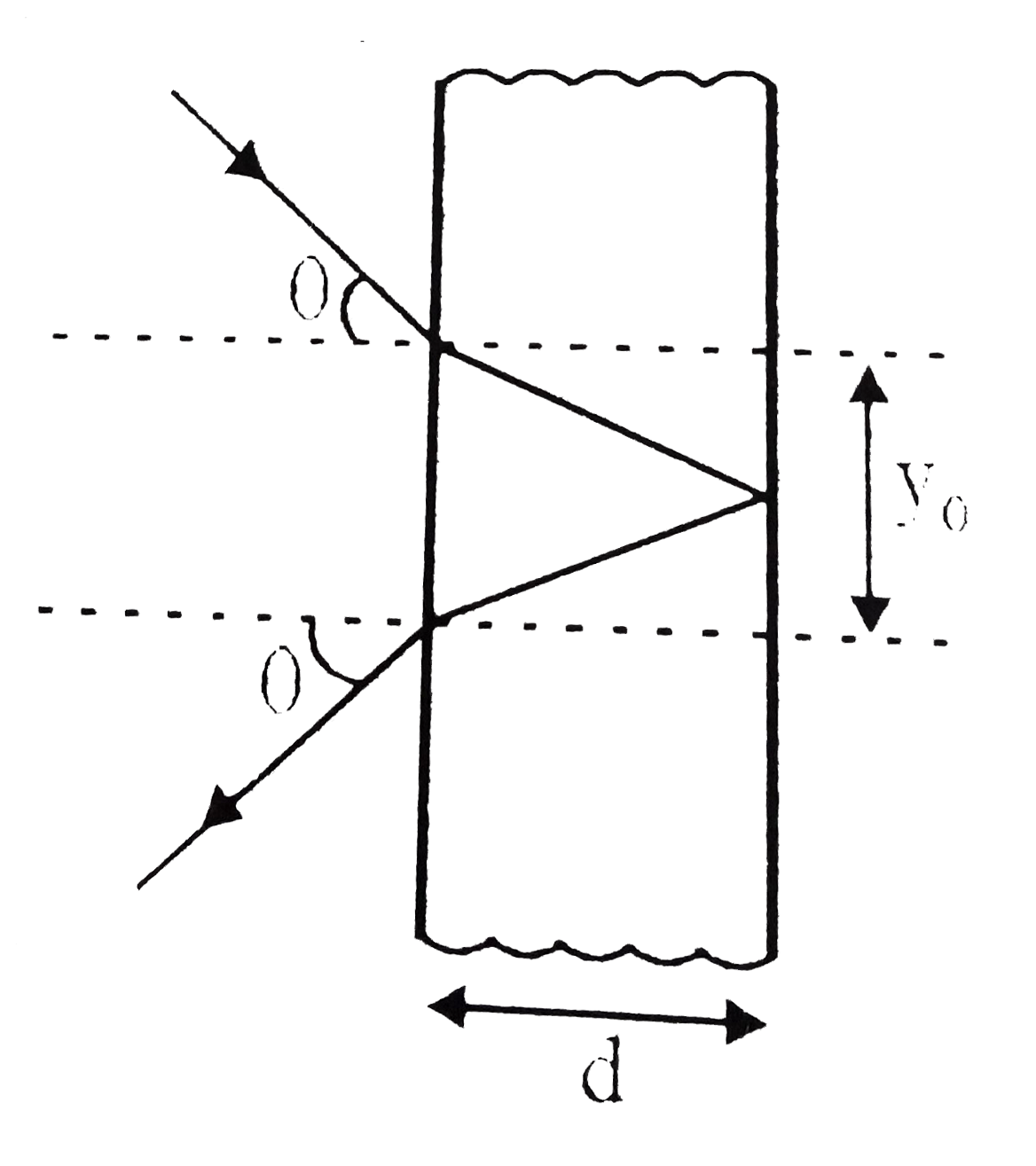Ordinary (i.e., unpolarised) lights is incident on the surface of a transparent material at the polarising angle. If it is partly reflected and partly refracted, what is the angle between the reflected and the refracted rays?
To solve the problem, we need to understand the behavior of light when it strikes the surface of a transparent material at the polarizing angle.
1. Identify the Polarizing Angle: The polarizing angle (also known as Brewster's angle) is the angle of incidence at which light with a particular polarization is perfectly transmitted through a transparent dielectric surface, with no reflection.
2. Understand the Reflection and Refraction: When unpolarized light hits the surface at the polarizing angle, it is partly reflected and partly refracted. The reflected light will be polarized perpendicular to the plane of incidence.
3. Use Snell's Law: According to Snell's Law, when light passes from one medium to another, the relationship between the angles of incidence (θ_i) and refraction (θ_r) is given by:
n1sin(θi)=n2sin(θr)
where n1 and n2 are the refractive indices of the two media.
4. Determine the Angle Between Reflected and Refracted Rays: At the polarizing angle, it is known that the angle between the reflected ray and the refracted ray is always 90 degrees. This is a special case that occurs at the polarizing angle.
5. Conclusion: Therefore, the angle between the reflected ray and the refracted ray is:
90∘
Final Answer:
The angle between the reflected and the refracted rays is 90∘.
n1sin(θi)=n2sin(θr)
where n1 and n2 are the refractive indices of the two media.
90∘
The angle between the reflected and the refracted rays is 90∘.
Similar Questions
A ray of light is incident on a transparent medium at polarizing angle. What is the angle between the reflected ray and the refracted ray .
View SolutionIf the angle of reflection is 45∘, what is the angle between the incident ray and the reflected ray?
View SolutionA ray of light-is incident on glass at the polarising angle ip. Find the angle between the reflected and refracted rays.
View SolutionA ray of light is incident on the surface of a glass plate of refractive index √3 at the polarising angle . The angle of incidence and angle of refraction of the ray is
View SolutionA ray of light is incident on the surface of a glass plate at an angle of incidence equal to Brewster's angle ϕ. If μ represents the refractive index of glass with respect to air, then the angle between reflected and refracted rays is
View SolutionUnpolarized light is incident on a plane surface of glass of refractive index μ at angle i. If the reflected light gets totally polarized, write the relation between the angle i and refractive index μ.
View SolutionAngle of reflection is the angle between the reflected ray and the ………………. incident ray/normal).
View SolutionUnpolarized light is incident on a plane glass surface. What should be the angle of incidence so that the reflected and refracted rays are perpendicular to eachother ?
View SolutionWhen a ray of ordinary light is incident on the surface of separation of two media at polarizing angle, show with the help of a labelled diagram that reflected ray and the refracted ray are mutually perpendicular to each other.
View SolutionA ray of light incident from air on a glass plate of refractive index n is partly reflected and partly refracted at the two surfaces of the glass. The displacement y0 in the figure is

View Solution